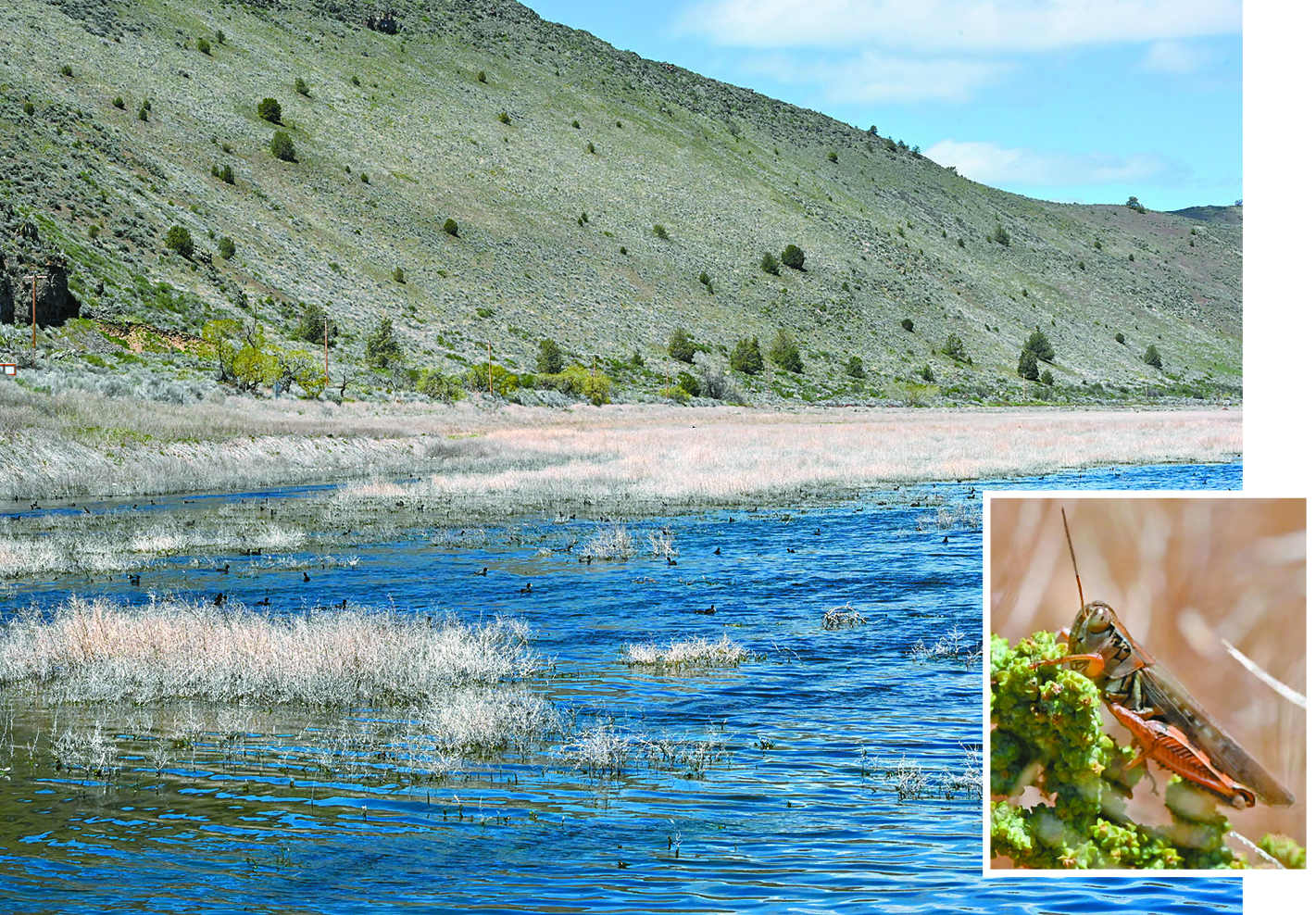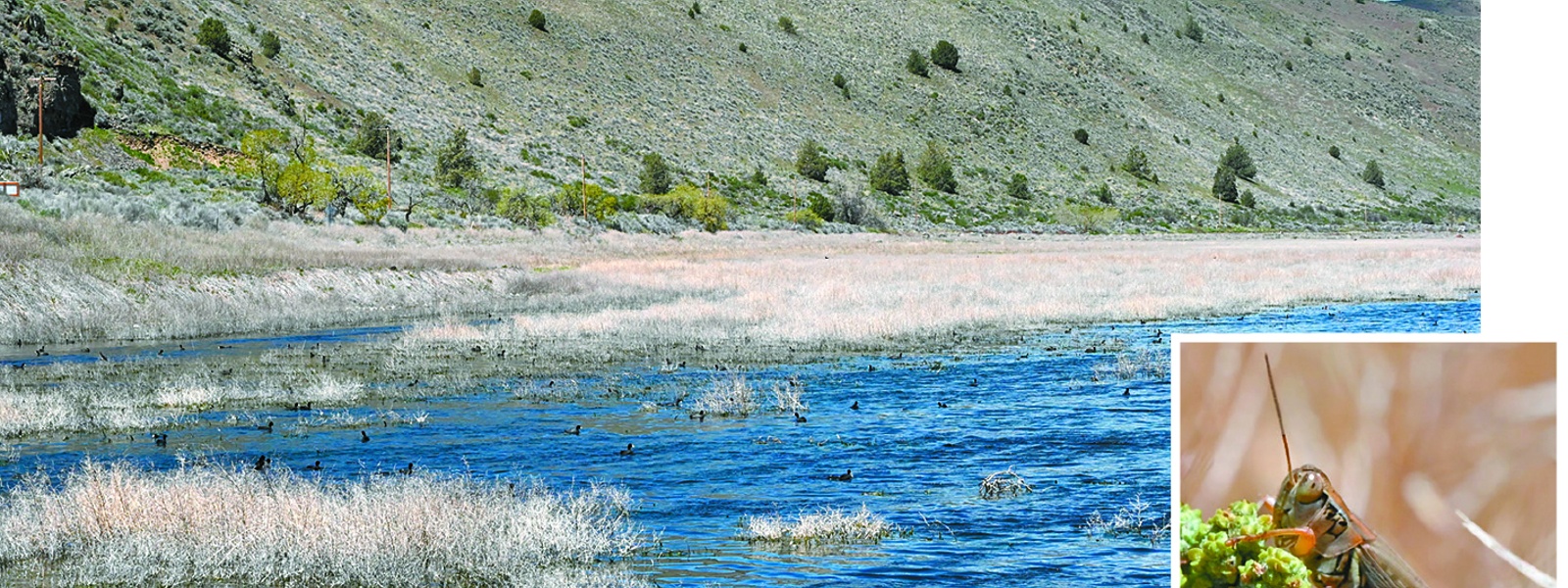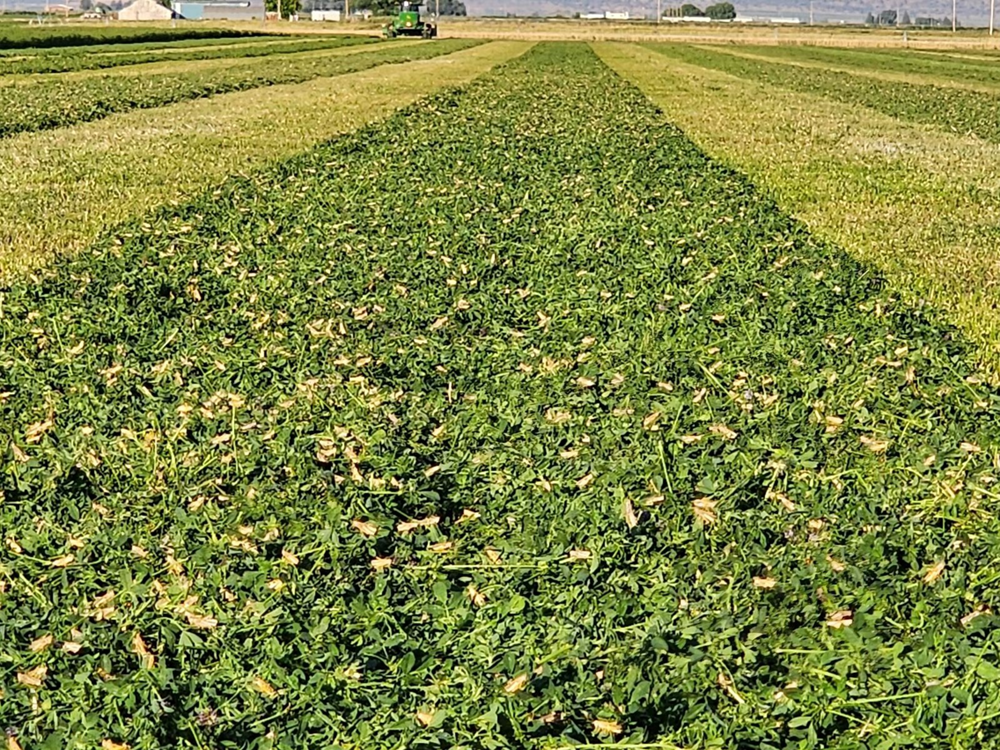Anxiety rises as grasshopper season begins in North State

Affected by crop damages caused by grasshoppers and Mormon crickets in the past few years, farmers are hopeful that excess water this year kills the eggs, reducing the population.
Photos/Chelsea Shearer


Photo/Courtesy of John Crawford
By Kathy Coatney
Swarms of grasshoppers and Mormon crickets, which travel great distances and destroy crops in their path, are expected to make another unwelcome appearance this year.
University of California Cooperative Extension farm advisors say the grasshoppers, which lay eggs in the fall and begin hatching by summer, are usually more isolated to rangeland and irrigated pasture than irrigated row crops.
However, exacerbated by dry conditions, farmers in Siskiyou and Modoc counties have reported tens of millions of dollars in crop losses during the past several years due to damage caused by the feeding grasshoppers and crickets.
Klamath Basin farmers and ranchers say several grasshopper species destroyed hay, onions and other irrigated crops last year, after the insects left dry wildlife refuges in search of food.
Growers say they are anxious this season, since there could be billions of eggs waiting to hatch. Grasshoppers do not like water or wet conditions, so growers are hoping that early rains may have helped in destroying the eggs.
Tulelake farmer John Crawford said the grasshoppers last year damaged his alfalfa and two barley fields, including one organic and one conventional. The conventional barley was treated and lost some yield. An organic insecticide was applied to the organic barley, but the material had little impact on the grasshoppers. Crawford said he lost 80% of the crop.
“I’ve seen a dozen serious grasshopper outbreaks in my lifetime, but I’ve never seen anything that even came close to rivaling last year,” Crawford said. “It was just far beyond anything that we’ve ever had before.”
The worst of the grasshopper invasion, he said, came mid-July during the second cutting of alfalfa. The hay came back after irrigation, and by the time growers did a third cutting, the grasshoppers had moved on, Crawford said.
Laura Snell, UCCE livestock and natural resource advisor in Modoc County, agreed that rain and cold weather can drown the eggs.
“Most of the time, the grasshoppers lay their eggs in drier areas,” Snell said. “If those dry areas are flooded or have a particularly cold, wet winter, populations definitely can be affected.”
However, she said, “we did not receive enough cold weather to deter them at all.”
In fact, she has already seen significant populations of grasshoppers hatching in the Tulelake area and the lower elevations of Modoc County.
Snell said there are two conventional treatments available for grasshoppers. The most effective treatment kills them in the hopper stage before they can fly. She added, “There is a lot more effectiveness if they are in what’s called an early instar,” or developmental phase for the insects.
As grasshoppers go through seven levels of molting and shed their exoskeleton, Snell said the critical stage to treat is when the grasshoppers don’t have wings and aren’t flying.
“They are particularly susceptible to chemical applications, and it is when they are eating the most,” Snell said. “For the spray to be effective, they need to consume the grass that’s been sprayed, so you want to be in those early stages when they’re eating a lot of grass.”
Crawford said “there are a lot of unknowns” this season.
“We don’t know how many billions of eggs are here from last fall, but we have gotten some water into Tule Lake sump 1-A (in the refuge),” he said. “A lot of the eggs are just on the fringe in the sagebrush around the agricultural fields, and those haven’t been sprayed.”
Due to the potential for serious crop damage this year, Snell said, it is important for growers to apply crop protection materials between late May and early June.
“Our first suggestion is always to start monitoring early,” she said. “Start counting and looking for small grasshoppers now.”
To control grasshoppers and prevent them from laying more eggs, Snell said, farmers should treat grasshoppers early with insecticides and bait pellets. For questions about treatment options, she suggested farmers contact their local farm advisor or pest control advisor.
Without widespread treatments, the grasshopper infestations are expected to continue.
Farm advisors and others have requested grasshopper treatments from the U.S. Department of Agriculture Animal Plant Health Inspection Service, which operates a suppression program in many states and conducts treatments on federal lands. USDA APHIS often provides a cost-share for treatment of private lands adjacent to federal lands.
Those affected have been in communication with the agency since late 2021 regarding the need for grasshopper treatments in affected California counties.
“We’ve been trying to get help from federal USDA APHIS and even CDFA (California Department of Food and Agriculture) for years, but so far, nothing,” Snell said.
Early this month, a coalition of Klamath Project irrigation districts requested state and federal assistance in addressing the anticipated grasshopper outbreak.
“In 2023, grasshoppers like we’ve never seen before hatched from the dry Lower Klamath National Wildlife Refuge and caused tremendous damage to growers’ crops throughout the region to the tune of tens of millions of dollars and counting,” the letter stated.
Last December, Modoc and Siskiyou counties requested a disaster declaration from USDA due to grasshopper damage incurred last summer.
Modoc County Farm Bureau President Sean Curtis, who works as a planner for Modoc County, said, “In the rest of the states that have grasshopper issues, there’s a program that shares the cost of treatment. California gave it up years ago, and we have not been able to get it back.”
Curtis added, “The wildlife refuge is the source where the eggs are laid. This requires environmental analysis before treatment can be done on federal ground.”
To get treatment approved, he said officials must conduct a survey as part of their environmental analysis.
“We’ve had both Forest Service scientists and Cooperative Extension scientists collecting lots of data, but APHIS hasn’t accepted it because they have to do it themselves,” Curtis said. “We’d like to get the cost-share program back, so when producers do treat, they get some help from the agencies.”
Across the border in Oregon, state agriculture officials have earmarked funds to help battle the infestation and previously reimbursed farmers for the cost of treatments. Grasshopper activity has been reported in many California counties and 17 Western states.
(Kathy Coatney is a reporter in Bend, Oregon. She may be contacted at kacoatney@gmail.com.)




